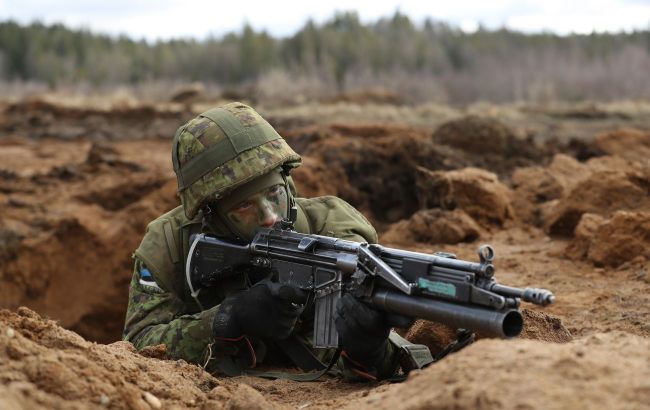Baltic countries to create joint defense zone on borders with Russia and Belarus
 Illustrative photo (Photo: Getty Images)
Illustrative photo (Photo: Getty Images)
The defense ministers of Estonia, Latvia, and Lithuania have approved the creation of a joint Baltic defense zone on the border of Russia and Belarus, reports the Ministry of Defense of Estonia.
It is noted that the defense ministers signed an agreement today in Riga, according to which Estonia, Latvia, and Lithuania will create a defense zone on their borders in the coming years. This zone will consist of various defense facilities aimed at deterrence and, if necessary, protection from military threats.
"The Baltic defense zone is a carefully considered project, necessitated by the security situation. Russia's war in Ukraine has shown that, in addition to equipment, ammunition, and manpower, we also need physical defense structures at the border to protect Estonia from the very first meter," says Estonian Defense Minister Hanno Pevkur.
He states that the purpose of these defense facilities is to prevent military conflict in their region.
It is done so that the residents of Estonia can feel safe, but if even the smallest risk arises, they will be ready for various events sooner.
What the defense zone will consist of
The concept of defense facilities is based on the agreement at the NATO summit in Madrid that allies must be protected from the first meter, as well as new regional defense plans.
The Baltic defense zone, in essence, is a complex of preventive measures and field protection, the elements of which on the ground support the activities of defending defense units in strong points to counteract if needed, the aggression of enemy units.
The elements will be scattered across the landscape, taking into account the results of the analysis of the enemy and the surrounding environment, as well as the battle plan of the defense force units.
"The Baltic region is one area of combat, and therefore, defensive facilities are being built jointly with Latvia and Lithuania," the Estonian Ministry of Defense writes.
What else the ministers agreed on
In peacetime, explosive substances and other obstacles will not be placed in the security zone, a network of support points and distribution lines will be created. All processes are carried out in cooperation with local communities and with the consent of landowners.
Defense ministers also signed an agreement of intent regarding the HIMARS salvo fire system, the purpose of which is to create a basis for joint use of the weapon system both in peacetime and in wartime.
Officials discussed assistance to Ukraine
The defense ministers of Estonia and Latvia also signed an agreement on cooperation in ensuring NATO air security from the Lielvarde airbase in Latvia, while the take-off and landing strip at the Amari airbase is under repair.
In addition, defense ministers discussed issues related to support for Ukraine, the development of the potential of the Baltic countries, and the upcoming summit in Washington.
NATO prepares for possible escalations from Russia
Earlier, Bild wrote that the Bundeswehr was preparing for a hybrid Russian attack on the eastern flank of NATO. The military conflict could allegedly occur as early as February of this year.
Recently, the head of the NATO Military Committee, Admiral Rob Bauer, stated that the Alliance needed transformation, and the West had to prepare for an era in which everything could happen at any time, including the start of war.
Today, Bauer stated that the civilian population of Western countries should prepare for an "all-out war" with Russia.

